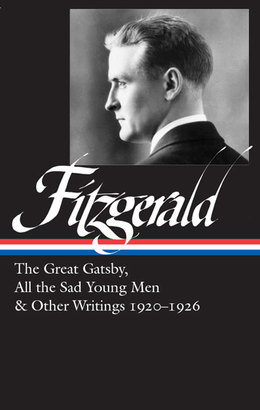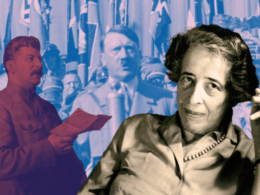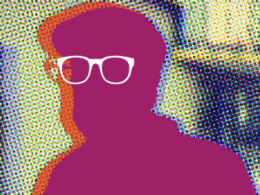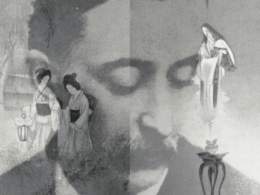The long-awaited second volume of Library of America’s Fitzgerald edition is here! At the center of F. Scott Fitzgerald: The Great Gatsby, All the Sad Young Men is the author’s acknowledged masterpiece and most popular book, The Great Gatsby—the 1925 novel that sealed his reputation as the preeminent chronicler of the Jazz Age. Library of America presents Gatsby in an authoritative, newly edited text that corrects numerous errors and restores Fitzgerald’s preferred American spellings.
The new volume also includes Fitzgerald’s third collection of stories, All the Sad Young Men, which features some of his best short fiction—“Winter Dreams,” “The Rich Boy,” and “Absolution”—along with a generous selection of stories and nonfiction from the period 1920 through 1926.
The book’s editor is James L. W. West III, Edwin Erle Sparks Professor of English, Emeritus, at Pennsylvania State University, who served as General Editor of the Cambridge Edition of the Works of F. Scott Fitzgerald from 1994 to 2019. West is also the author of The Perfect Hour: The Romance of F. Scott Fitzgerald and Ginevra King (2005), William Styron: A Life (1998), and the essay collection Making the Archives Talk (2011).
In the interview below, West talks to Library of America Editorial Director John Kulka about the new LOA volume and about his long involvement with The Great Gatsby.
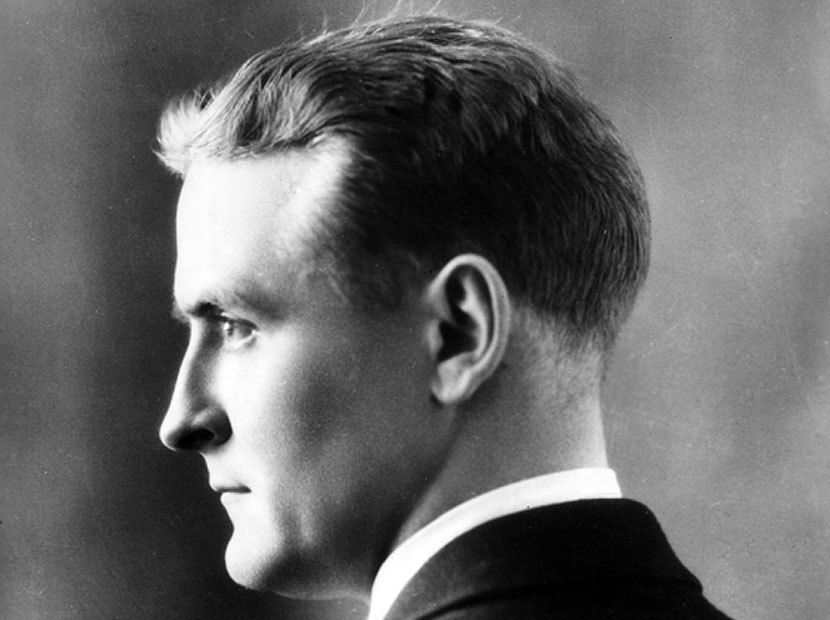
Library of America: The Great Gatsby entered the public domain in 2021. I think you’ll agree that the expiration of copyright is generally a good thing for readers, as new editions become available and as scholars are free to quote at length from public domain works. But not all editions are equal. Our readers will be very interested to know that you undertook a study of all the new editions of Gatsby that appeared in print when the novel entered the public domain. Can you tell say something about what you discovered?
James L. W. West III: I examined thirty-four new editions of the novel, all of them published after its copyright protection had expired. Three or four are responsibly done, but the others are simply efforts, often haphazard, to capture a small slice of the enormous market for the book. The problem seems to be that everyone wants to “improve” The Great Gatsby, to make a few revisions here and there, common-sense revisions that “Fitzgerald surely would have wanted.” This has been a problem throughout the long textual history of the novel—freelance emending. In these recent editions, errors and other variants that have not appeared in an edition of the book for decades have risen from the grave and made their way into the new texts. It’s as if these editions, the old ones and the new ones, have been cross-pollinating in the night. One example: seventeen of the thirty-four new editions omit the dedication to Zelda Sayre, Fitzgerald’s wife and muse. That’s unforgivable.
LOA: Let’s talk about your own work on F. Scott Fitzgerald: The Great Gatsby, All the Sad Young Men & Other Writings 1920–1926. You have prepared new, corrected texts of all these works for Library of America. It’s beyond the scope of this interview to talk in any great detail about the considerable textual work that stands behind this volume, but I wonder if you might say a little bit about Gatsby. The Library of America volume presents the first printing of the novel in 1925, emended in various ways. Can you say a little about that?
West: I’ve been studying the text of The Great Gatsby for more than fifty years. Fortunately, Fitzgerald was a pack rat. He saved manuscripts, typescripts, proofs, correspondence, and marked copies of his books. This has allowed us to discern his intentions much more accurately than we could have done without those materials. He saved the manuscript and galley proofs of The Great Gatsby. I’ve published editions of both. This work has convinced me that control of the text must be given back to Fitzgerald. Many of the editors who have published editions in the past have emended with a heavy hand. One editor emended the text at more than 1,600 points. In the edition I prepared for Library of America, I emended the text only ninety-eight times, with seventy-seven of these alterations made on Fitzgerald’s authority. All of the emendations are listed in the back matter of our volume. Such treatment can be likened to the stabilization, cleaning, and restoration of a work of art that has deteriorated over time.
LOA: Fitzgerald began work on Gatsby as early as 1922, but he put the novel aside to work on his play, The Vegetable, and then, after its unmitigated pre-Broadway flop late in 1923, on the composition of magazine stories to get himself out of debt. Among those magazine stories are those that scholars refer to as the “Gatsby cluster.” What stories are those and what is it they share with Gatsby?
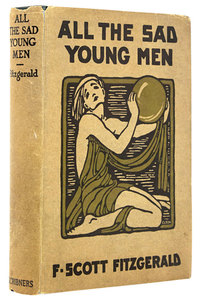
West: Fitzgerald often used his short stories as chances to experiment with characters, settings, and themes that would appear later in his novels. Two stories in particular—“Winter Dreams” (1922) and “Absolution” (1924)—anticipate the concerns of The Great Gatsby. It’s useful for readers (particularly students) to read these stories before they begin the novel. Fitzgerald told his editor, Maxwell Perkins, that “Winter Dreams” was “a sort of 1st draft of the Gatsby idea.” That’s true. Judy Jones, the golden girl in “Winter Dreams,” is an early version of Daisy Buchanan; and Dexter Green idealizes her, much as Gatsby does Daisy. “Absolution,” set in the Midwest, is salvaged from Fitzgerald’s earliest efforts in 1922–23 to draft a new novel. It has a character, a young boy, who dreams of escaping his humble upbringing, just as young Jay Gatsby does in the novel.
Another story, “Rags Martin-Jones and the Pr-nce of W-les” (1924), is magazine entertainment at its best, but with underlying themes about money and love that reappear in The Great Gatsby. And “The Rich Boy” (1926), a superb novella written just after Gatsby was published, is told in the first person by a narrator who resembles Nick Carraway. “The Rich Boy” is the best exploration I know of old money vs. new money—one of the concerns in Gatsby. All of these stories are included in our Library of America volume, so readers will no longer have to search for them.
LOA: Fitzgerald had a notoriously difficult time settling on the title of his most famous novel. And even after Fitzgerald and Perkins finally seemed to agree on The Great Gatsby, Fitzgerald remained anxious, urgently cabling his editor only three weeks before the publication date saying he had a change of mind. In fact, Fitzgerald continued to worry about the title after publication, is that right?
West: It’s fun to consider some of the working titles that authors later reject. What if T. S. Eliot had published his famous long poem not as The Waste Land but as “He Do the Police in Different Voices”? Fitzgerald was never entirely happy with The Great Gatsby as a title. During composition he had considered “Among the Ash Heaps and Millionaires,” “Trimalchio in West Egg,” “Gold-Hatted Gatsby,” “On the Road to West Egg,” and “The High-Bouncing Lover.” Three weeks before publication he sent this cable to Perkins: “CRAZY ABOUT TITLE UNDER THE RED WHITE AND BLUE STOP WHART [sic] WOULD DELAY BE.” Perkins dissuaded him in a return cable: “Advertised and sold for April tenth publication…. Think irony is far more effective under less leading title. Everyone likes present title. Urge we keep it.” Fitzgerald conceded: “YOURE RIGHT.” But he was still not satisfied with The Great Gatsby as a title and fretted, after publication, that the novel would have sold more briskly if he had called it by another name.
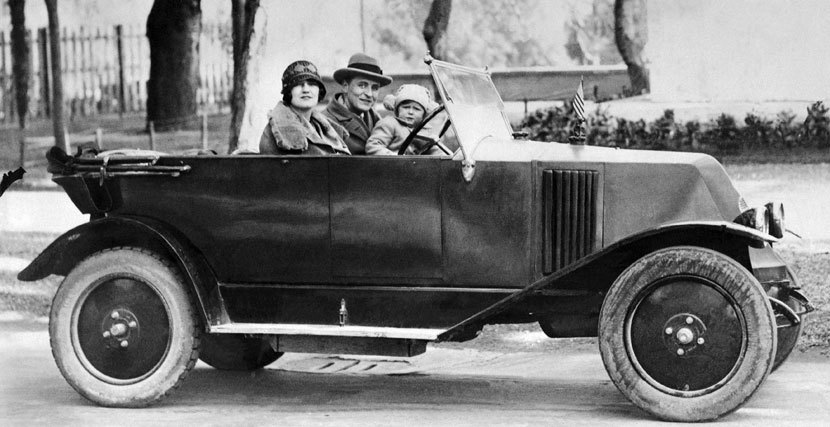
LOA: Gatsby is a very different kind of novel than Tender Is the Night, which was Fitzgerald’s long-in-coming follow-up to Gatsby. I don’t know that any critic has ever made this particular point of comparison, but I’ve always been amused by thinking about the differences between Gatsby’s unworn shirts—there’s that extraordinary scene in Gatsby’s bedroom after he’s reunited with Daisy, where for her appreciation he tosses one fine shirt after another into a heaping colorful pile on his dresser—and Dick Diver’s “trick” with his own shirts, his method of getting an extra day’s use out of his laundered shirts. Is that a detail you’ve ever noted?
West: Those are small details, but they’re telling and important. Gatsby displays his beautiful shirts to prove to Daisy that he is worthy of her. He purchased those shirts for her, dreaming of the day he could lay them out for her to see and touch. She understands. She weeps over the shirts. To her Jay Gatsby is not quite real. He’s an abstraction, just as she is to him. Dick, on the other hand, is flesh and blood—a man who soils his shirts. Although he has access to the Warren fortune through his wife, Nicole, he was not brought up to wealth and is not particularly comfortable with money and possessions. He is thrifty (even monkish) by nature, unwilling to put a shirt into the laundry when it still has a wear or two left. He can do this because men’s shirts, during the period of the novel, had detachable collars. One could put a fresh collar on the body of a shirt that had been worn a few times and get another wear or two before laundering.
LOA: In one of our conversations, you called The Great Gatsby a “secular scripture.” It’s been widely read and has held the attention of the American public for almost one hundred years. What has made it so enduring?
West: Well, we have Nick Carraway as our narrator. He’s quite a likeable fellow. We trust him. Gatsby himself, despite Fitzgerald’s efforts to tell about his past and to reveal the sources of his wealth, remains a bit of a mystery. Certainly, he’s more than an arriviste, a parvenu, but what exactly motivates him? Perhaps it’s best that Fitzgerald didn’t explain too much. This leaves room for the reader’s imagination to work. The other characters are well-drawn: Tom and Daisy Buchanan, Jordan Baker, George and Myrtle Wilson. The minor characters too—Myrtle’s sister Catherine, with her “sticky bob of red hair”; Chester McKee, with his murky “photographic studies”; his wife Lucille, “languid, handsome, and horrible”; Meyer Wolfsheim, showing those peculiar cufflinks to Nick; Ewing Klipspringer, playing the piano and performing his “liver exercises on the floor”; Owl Eyes, peering at the unopened books in Gatsby’s library. And there’s Gatsby’s gorgeous yellow car, his medal from “Little Montenegro,” his pink suit. The parties on his blue lawn, with dancing and jazz and glamorous guests—all of this stays in the mind.
Finally, there’s the green light, glowing through the night from across the bay. Readers know what the green light signifies, even if they can’t put it into words. The novel captures something uniquely American: our hopes and dreams, our sense of infinite possibility, our disappointment when our dreams aren’t fulfilled. That’s quite a lot for one short novel.
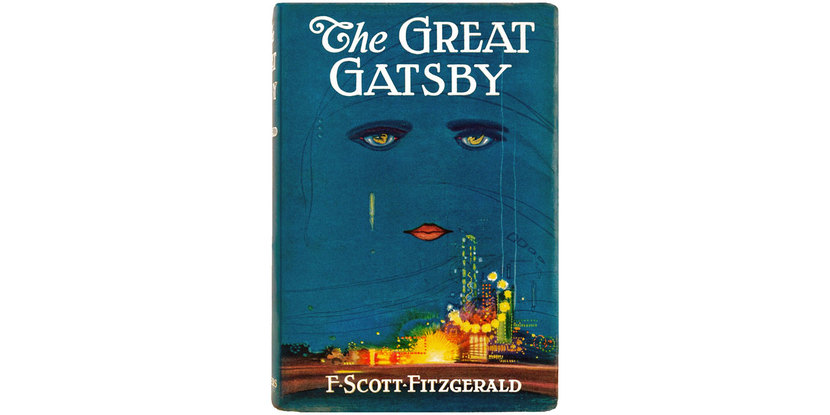
LOA: The cover art of Gatsby by Francis Cugat—a woman’s eyes hovering over an amusement-park scene—made for one of the most famous covers in an extraordinarily rich period in American book design—well, in the entire history of American book design, really. Fitzgerald saw that artwork in the Scribner’s offices and he lobbied very hard for that cover, is that right?
West: He did indeed. He saw Cugat’s painting—a gouache on paper—in the Scribner’s offices in May 1924, shortly before departing with his wife and daughter for a long stay in Europe. The painting made its way into the novel. Toward the end of August, Fitzgerald wrote to Perkins from Saint-Raphaël in France, asking that the painting be reserved for the jacket. “For Christ’s sake don’t give anyone that jacket you’re saving for me,” he said. “I’ve written it into the book.” Possibly Fitzgerald took the eyes of Doctor T. J. Eckleburg from the painting—it’s difficult to say. But the jacket has now become iconic.
LOA: You have spent a lifetime editing and writing about Fitzgerald’s works. What impressed you going through his work again as you prepared the texts for this Library of America edition?
West: I’ll mention two things. First, I was impressed by Fitzgerald’s discipline in conceiving, composing, and finishing The Great Gatsby. The period of its composition was his finest hour. He refused to be distracted. He brought together the magic elements of talent, inspiration, and luck to create a masterpiece. Second, I was struck anew by the beauty of the language in the novel. Fitzgerald had a pitch-perfect ear. Some of those passages—Daisy and Jordan floating on the sofa, Nick woozy with drink in Myrtle’s apartment, Gatsby smiling down on his guests—these are unforgettable.
